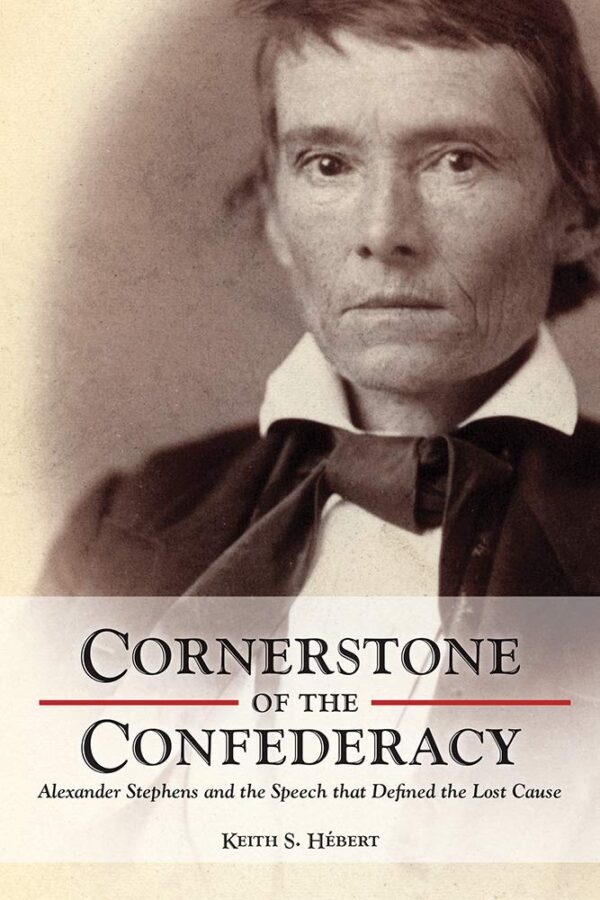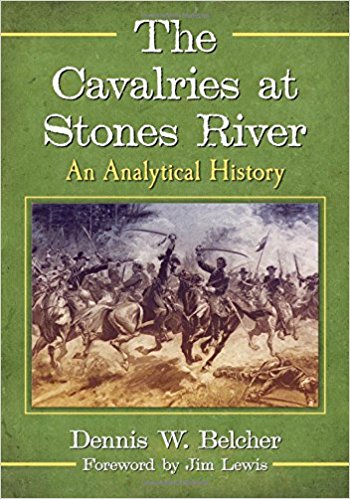Cornerstone of the Confederacy: Alexander Stephens and the Speech that Defined the Lost Cause by Keith S. Hébert. University of Tennessee Press, 2021. Cloth, ISBN: 978-1621906346. $45.00.
 The “corner-stone” of the Confederacy, insisted its newly-appointed vice president Alexander H. Stephens, “rests upon the great truth that the negro is not equal to the white man. That slavery—subordination to the superior race—is his natural and moral condition” (1). The harrowing and haunting meaning of Stephens’s words seem obvious to twenty-first century readers. As historian Keith Hébert demonstrates, the speech did more than define the Confederate States over its strange career. Contestants in the battles to the define the war’s meaning and legacy wielded and weaponized the speech. Cornerstone of the Confederacy “examines the convoluted trail of ways Americans have remembered Stephens’s speech over the past 150 years” (1).
The “corner-stone” of the Confederacy, insisted its newly-appointed vice president Alexander H. Stephens, “rests upon the great truth that the negro is not equal to the white man. That slavery—subordination to the superior race—is his natural and moral condition” (1). The harrowing and haunting meaning of Stephens’s words seem obvious to twenty-first century readers. As historian Keith Hébert demonstrates, the speech did more than define the Confederate States over its strange career. Contestants in the battles to the define the war’s meaning and legacy wielded and weaponized the speech. Cornerstone of the Confederacy “examines the convoluted trail of ways Americans have remembered Stephens’s speech over the past 150 years” (1).
Hébert’s book blends biography, Civil War history, and memory studies. “No historian,” the author contends, “has examined how the Lost Cause, emancipationist, and reconciliationist visions of Civil War memory used Stephens’s words to shape postbellum debates concerning the war’s causes and white supremacy’s continuity in American society” (4). Hébert, of course, owes much of his organizational logic to the three strands of Civil War memory described by David W. Blight in Race and Reunion: The Civil War in American Memory [2001]. Though some have challenged Blight’s categorization as too simplistic, they allow Hébert to organize a narrative structure around the battles over Civil War memory.
Alexander H. Stephens was a pragmatist and seemed to support multiple, conflicting political positions. In reality, he consistently supported a white supremacist construction of his nation: “His belief in America was contingent upon the nation’s endorsement of white supremacy” (9). By the time of the Civil War, there was a “confluence of racist ideas that…had merged to form a new ideology, white supremacy” (10). White supremacy asserted that “enslaved labor was the natural and divine condition of black people due to the latter’s inferiority and inability to be fully reformed into prospective citizens” (3). Stephens consistently believed that slavery was “a glue that bound together the South’s white men under a common banner of white supremacy and Christian virtue” (37). When he supported the Confederacy, Stephens believed that he was helping to preserve this “way of life” that provided “equality” for all white men.
Stephens delivered the Cornerstone Speech without notes. The speech demonstrated his belief that the Confederate Constitution surpassed the United States Constitution. “Until recently,” Stephens claimed, “even white southerners had not fully accepted the relationship between white supremacy and slavery” (44). Though Stephens identified other causes for war, he always connected these secondary issues to a defense of slavery and white supremacy (62).
After the war, Stephens became one of the intellectual godfathers of the Lost Cause mythology. The Cornerstone Speech was not lost to history, however, because emancipationists continued to brandish the speech in their efforts to remind Americans that “slavery and white supremacy had caused the Civil War” (87). White supremacists, not surprisingly, celebrated Stephens as a defender of civil and religious liberties. In contrast to their efforts, professional historians, Black emancipationists, and Union veterans all used the Cornerstone Speech into the twentieth century to maintain the racist origins of the Confederacy and the Civil War. “Although many tried to present various forms of Stephens throughout the years, the words found in the Cornerstone Speech continued to define his ultimate legacy” (124).
Americans continue to wrestle with the legacy of the Confederate States of America, and the Cornerstone Speech continues to define that struggle. “Since the early 1990s, the Cornerstone Speech has become one of the most widely quoted orations associated with the American Civil War” (187). Hébert finds that professional historians continue to use the speech in defense of the white supremacist origins of the Confederacy; even so, neo-Confederates continued in their attempts to discredit the white supremacist argument of the Speech. Much of the debate surrounding the Civil War “has been thoroughly addressed by nonpartisan scholars for decades, but large segments of white Americans distrust their objectivity and remain convinced that academics are part of a conspiracy to rewrite history in a way that undermines American pride and diminishes the role of white people in building America” (210).
Cornerstone of the Confederacy is a welcome addition to the literature on the Civil War and its memory. Hébert traces the debate surrounding a particular speech so that the contest between divergent, postbellum interpretations of the war may be better understood. His analysis of the ways in which different memory traditions used and exploited Stephens’ words tells us much about the struggle over the meaning of the Civil War. The contents of the Cornerstone Speech are well known, but in Hébert’s capable hands, they take on new life and meaning. “Alexander H. Stephens’s Cornerstone Speech,” the author concludes, “stands at the intersection of the battle for the past, present, and future of American culture” (211).
Caleb W. Southern earned his MA in History at Sam Houston State University. He is the Director of Retention at Southern Wesleyan University.
